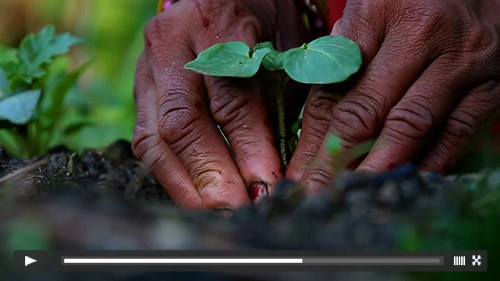The Sustainability of Print
In today’s world, print can unfairly get the reputation of being an unsustainable communication method. At Canon, we are working to help change the narrative and provide data that supports the sustainable story print has to tell. So, what can you share with your customers and prospective clients when they ask about the sustainability of printing?
Digital printing can help.
Digital printing can help contribute to less waste and, in turn, to more efficient and sustainable business models. It allows customers to print only what is needed, in shorter runs than traditional offset, while reducing waste and obsolescence and eliminating the need for preprinted plates, forms, or chemicals. Digital printing generally offers good deinkability, which increases the ability to recycle. In addition, it enables print service providers to produce targeted content that includes only what is necessary for the recipient, thereby allowing for lower page counts.
Paper is a sustainable resource.
In general, print and paper are more sustainable than most people think. With responsible forest management and recycling, paper is both renewable and sustainable. Working forests—forests that are harvested for resources and then replanted—provide a home for wildlife and help recapture carbon from the atmosphere. These working farms are actually increasing the forestland in North America. Today, more trees are grown here annually than are harvested. Once harvested, trees are turned into paper that can be used and then recycled1.
The combined pulp, paper, and print sectors are the lowest industrial emitters of global greenhouse gases, at only 0.8%. Compare that to the information and communications technology industry, which accounts for around 2.5–3% of current global greenhouse gas emissions—a figure predicted to rise to 14% by 20402.
Canon prioritizes sustainability.
Canon’s sustainability efforts begin at the beginning—in the design and development stage of our production print line. When designing products such as our varioPRINT iX, ColorStream, and ProStream series inkjet presses, we strive to create cutting-edge products, built to last, that incorporate a greater amount of sustainable and recycled materials.
Beyond design, we strive to protect the environment throughout our products’ life cycles, developing and deploying energy-efficient manufacturing processes, as well as eliminating hazardous substances wherever possible. Our inkjet presses use environmentally friendly, water-based inks that contain no SVHCs, mineral oils, MOAHs, or MOSHs.
In keeping with our customers’ increased focus on energy efficiency right now, our inkjet presses are designed for heavy duty, 24/7 operation, featuring low energy consumption per printed page. By meeting Nordic Swan requirements, it allows some of our customers to be Nordic Swan Ecolabel 041 certified.
Canon cares about conservation.
With an eye to the future, Canon Solutions America plants trees on behalf of its production print customers. The Canon Eco Start Program is a partnership between its Production Print Solutions division, production print customers, and Trees for the Future. Designed to help our customers achieve carbon-neutral production, it also provides them with an opportunity to take part in improving the livelihood of communities while putting trees back into the environment.
Trees for the Future is a Charity Navigator four-star organization. Since its inception in 1989, Trees for the Future has helped communities in five countries within Central Africa improve their livelihoods and environment by planting more than 210 million trees, sequestering 4.5 million metrics tons of CO2 from the atmosphere.
Since the launch of the Eco Start Program, Canon Solutions America has planted more than 2.5 million trees on behalf of its customers, in Forest Gardens that provide food and income for hundreds of families who previously suffered from chronic hunger.
1 https://twosides.info/documents/Myths_&_Facts_Booklet.pdf
2 https://www.twosides.info/electronic-communication


